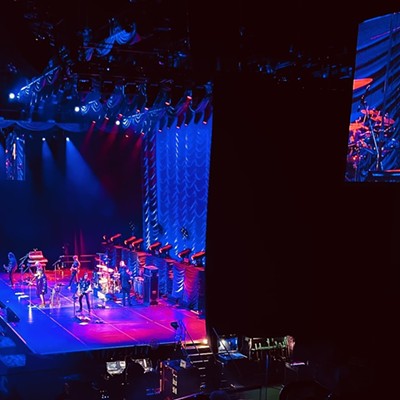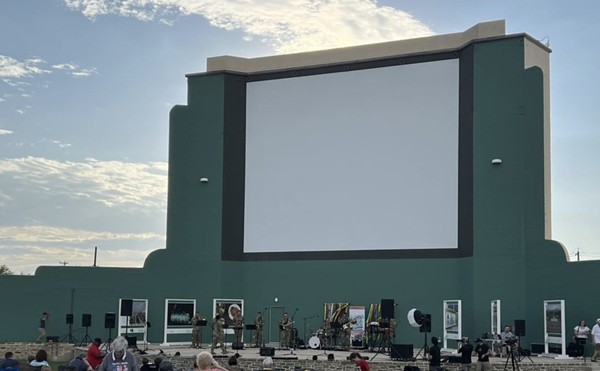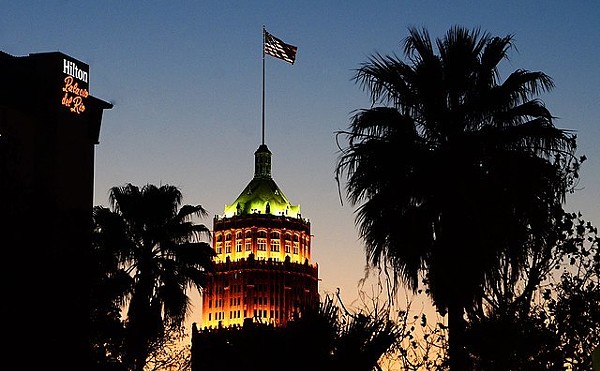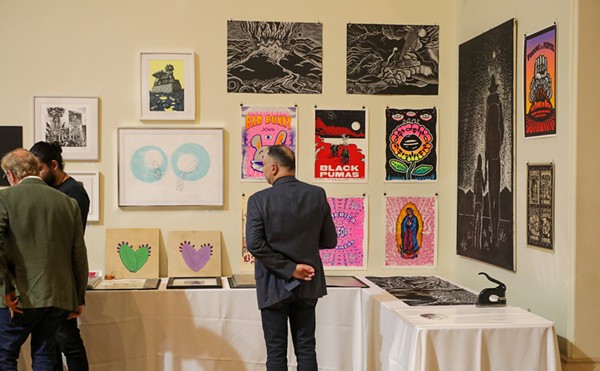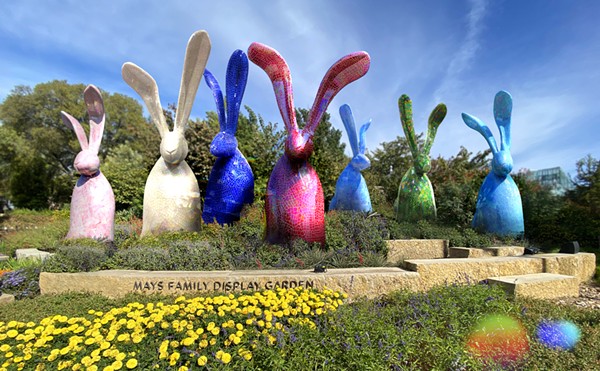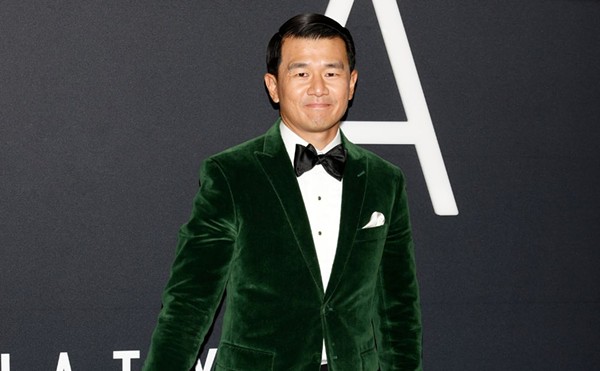After seeing the show, I asked several local art folk some pressing questions about Onderdonk and the bluebonnet genre, such as: Where do you place Julian Onderdonk in the scheme of Impressionism? What do you think of landscape painting in general, and bluebonnet painting in particular? Are bluebonnets relevant, or are they consigned to kitsch? Here’s who I asked, and what they had to say.
— Sarah Fisch
Charles Field Before becoming a tenured instructor at UTSA in 1974, he taught at University of New Mexico, the University of Texas at Austin, Western Illinois University and the American Institute for Foreign Study in London. He retired from UTSA in 2002. His paintings have been exhibited all over the world.
“I admire his honest, beautifully observed painting of this area’s landscape. He was the innovator. Unfortunately, lesser artists imitated, rather than expanded, his vision … I first moved to Texas in 1967, `and` Bluebonnet Painter was a toxic label, especially during the era of High Modernism … The real Texas landscape was then mostly ignored by serious students and artists.
`But` landscape is an inexhaustible subject for contemporary artists. Certainly it is a potent and timely political issue. Consider our intense focus on conserving our environment, global warming, clean water, over-development, offshore drilling etc, etc.
Impressionism, which freshened Onderdonk’s vision, is not as strong a current influence. It too has been co-opted and weakened. Realism continues to be the most vital influence for contemporary painting of the landscape.
Bruce M. Shackelford is the Brown Foundation Curator at the Witte, and did some of the restoration work on the Onderdonk Studio. He can frequently be seen on PBS’s series Antiques Roadshow.
“There was a bluebonnet painter in my own family in the 1920s. My great aunt still owns some of my Great Aunt Sally’s bluebonnet paintings from the 1920s. They hung in my grandmother’s home until her death in the 1990s. `I have a` life-long familiarity with `both the` wildflowers and the art. Especially thanks to childhood visits to the Witte Museum. There was at one time `a ‘typical Onderdonk collector’` but not now. `Bluebonnet paintings are` still being done very successfully by a few artists. There are the kitsch works but there are good paintings being done. Twenty years ago collectors and museums were interested in the Hudson River landscape school in the Northeast U.S. Now the great artists from across the U.S. are considered that by institutions — great artists — and not so much regional.”
Robert “Beto” Gonzales is a contemporary painter and graphic designer from San Antonio who has shown his work at Blue Star, Artpace, One9Zero6, Fl¡ght, the Alameda Theatre, Galería Ortiz, and at the Museo de las Americas in Denver.
“I have this friend who hates Led Zeppelin because of everything they’ve spawned. I hate Whitesnake and other stuff they led to, too, but I love Led Zeppelin! Reggae’s another example — pretty much all reggae sounds the same to me, but if you go back and listen to the original Bob Marley songs, they’ve got real texture, they’ve got meaning. I think there’s something to be said for bluebonnet painting as American Impressionism, in-period, in-genre. You can’t just flatten it all out into caricature and genre-fication; it’s got an authenticity.”
Lloyd Walsh has shown at several Texas Museums, including the McNay Museum in San Antonio and the Contemporary Art Museum in Houston, and at Blue Star, Artpace, and Finesilver galleries. Walsh has taught at Parson’s School of Design in Paris and is currently an instructor at Palo Alto College.
“I think that bluebonnets are the only subject worthy of painting on an old saw! … I remember as a kid being taken by mom to Southwest Craft Center to watch a painting demonstration. The instructor was a little bit like Bob Ross, painting those kinds of landscapes, and I remember him saying, ‘Oh, a bluebonnet’s easy — just three dabs of the brush.’ Seriously, though, Onderdonk was a great painter. He’s both in the Impressionistic and Realist historic traditions, and his perspective is as interesting as anyone’s at that time. He chose a truly rich subject matter for painting. It’s since Onderdonk that bluebonnets have taken on these associations.”
Harry Halff is a an art historian and dealer in San Antonio, whose Harry Halff Fine Arts gallery opened in 1996. Together with his wife, Lisa, and in conjunction with the Museum of Fine Arts in Houston, Halff plans to release definitive catalogues raissonés on both Robert and Julian Onderdonk in the Fall of 2010.
“I think he’s the best artist Texas produced in the late 19th-early 20th centuries, based purely on how he captured the Texas landscape. He painted Texas, not just bluebonnets. Like other Impressionists, he dealt with light and atmosphere, but it wasn’t about putting paint down quickly in order to record an impression of what the mind sees; it was about depicting the landscape, no matter how long it took. He would have been acclaimed if he’d been a California artist or a French artist … he just had an amazing eye. And he was just trying to make a living, just like a lot of the guys you know who are painters now.” •



